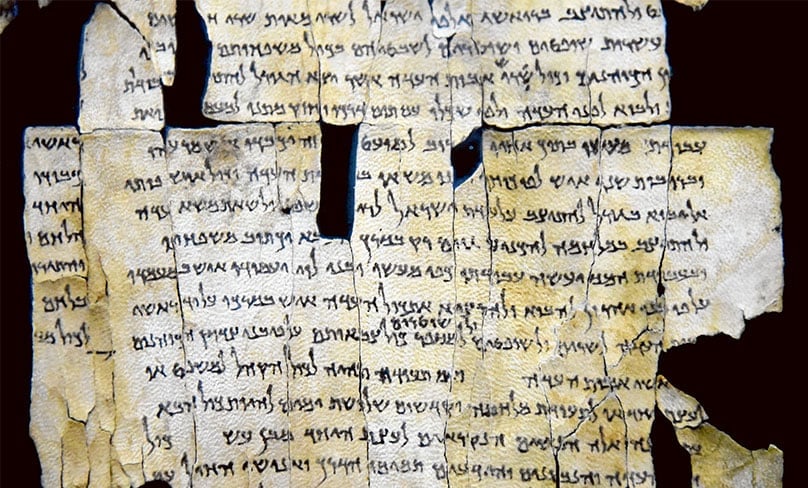
“I have often heard about the Dead Sea Scrolls. Do they have any significance for Christians?”
The Dead Sea Scrolls are ancient Jewish manuscripts which were discovered in Israel in the caves of Qumran, in the West Bank near the Dead Sea between 1946 and 1956 by Bedouin shepherds and archaeologists.
The scrolls were found in earthenware jars in eleven caves which contained the manuscripts and other artefacts.
Scholars date them from the last three centuries before Christ to the first century after Christ.
Bronze coins found at the same sites date from the time of John Hyrcanus, who was high priest from 135 to 104 BC, through to the first Jewish-Roman War from 66 to 73 AD.
The scrolls have great significance, both because of their antiquity and because they contain numerous texts of the Old Testament which corroborate those found in other manuscripts.
The scrolls are the second-oldest known manuscripts of the Hebrew Bible. The oldest, discovered in Jerusalem in two scroll-shaped silver amulets, date back to around 600 BC and contain portions of the Book of Numbers.
Before the discovery of the Dead Sea Scrolls, the oldest known Hebrew-language manuscripts of the Bible were the Masoretic texts dating to the 10 Century AD.
The scrolls are from a thousand years earlier and they demonstrate the unusual accuracy of transmission of the original Bible texts to the Masoretic texts.
What is more, the scrolls contain parts of all the books of the Hebrew Bible except the Book of Esther. There are no fragments from the New Testament. The Dead Sea Scrolls also contain non-biblical manuscripts which show the diversity of religious thought at the time.
The thousands of written fragments discovered in the Dead Sea area are pieces of larger manuscripts damaged by natural causes or human interference.
The great majority have only small scraps of text, although some, fewer than a dozen, are almost intact. Most of the texts are written in Hebrew, with some in Aramaic and others in Greek. Most are written on parchment, some on papyrus and one on copper.
Some 70 per cent of the identified texts are religious, mostly from the Old Testament, while the remainder relate to secular matters, including the Community Rule and beliefs of a Jewish sect.
Archaeologists have generally associated the scrolls with the Essenes, an ancient Jewish sect along with the Pharisees and Sadducees, which flourished from the second century BC to the first century AD.
The Essenes followed an ascetical life including voluntary poverty, daily ablutions by immersion in water, prayer, a strict observance of the Sabbath and works of charity. Their priests practised celibacy.
The understanding is that the Essenes wrote the scrolls and hid them in the nearby caves during the Jewish Revolt sometime between 66 and 68 AD. The site of Qumran was destroyed during the revolt and the caves containing the scrolls were not discovered until 1946.
The association of the scrolls with the Essenes is borne out by such facts as the striking similarity between the description of an initiation ceremony found in the Community Rule in the scrolls and the description of a similar ceremony of the Essenes mentioned by the historian Flavius Josephus.
There is also the sharing of property mentioned both in the Community Rule and in the work of Flavius Josephus, the discovery of ritual baths in Qumran which correspond to the practice of daily ablutions described in the Community Rule, and the discovery in Qumran of inkwells and tables on which writing could be done.
Moreover, Pliny the Elder, a Roman historian writing after the fall of Jerusalem in 70 AD, describes a group of Essenes living in a desert community on the northwest shore of the Dead Sea, where Qumran was located.
The Dead Sea Scrolls are indeed fascinating and significant for containing so many texts of the Old Testament from such an early period.
